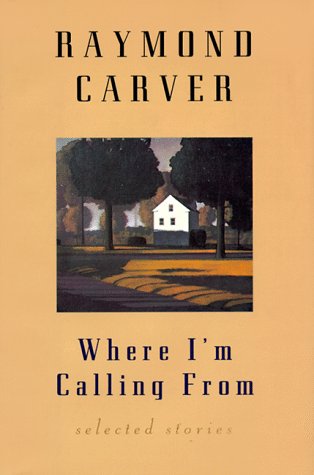
Carver, Raymond. “Little Things.” Where I’m Calling From. The Atlantic Monthly Press: New York. 1988.
Raymond Carver was an American short story writer and poet and is considered one of the most important writers of the late 20th century. He has published five collections of short stories, including Furious Seasons and Elephant, and six collections of poetry, including Winter Insomnia and Ultramarine. He also published several compilations and one screenplay. Several of his stories won the O. Henry Award. Carver’s spare style is described as minimalist writing, which is when the work is stripped down to its most fundamental features. One of Carver’s early tutors helped Carver achieve this form by telling him to trim his words from 25 to 15. Carver has also been included in the group of writers known as “dirty realists.” That term refers to writers in the 1970s and ’80s that used minimal words and focused on surface description. Most of those writers, including Carver, concentrated on the sadness and loss of the everyday lives of ordinary people – usually lower-middle class.
Carver expertly combined surface description with the desperation inherent in many of the lower-middle class. This is evident in one of his short stories, “Little Things,” which is just under two pages long.
“Early that day the weather turned and the snow was melting into dirty water. Streaks of it ran down from the little shoulder-high window that faced the backyard.” (Carver 114)
The quoted sentences are the first two sentences in the story. Even though the reader has not been introduced to the people in the narrative, these two sentences sum up their entire relationship.
Carver lets the reader know that it is early in the couple’s relationship by using the words “early that day.” He then uses weather to stand for their bond. “The weather turned” signifies that the relationship, early on, turned. The whiteness of snow represents the purity of new love, its innocence. But snow is also fragile, and it “melts into dirty water,” which shows that underneath the white façade, it was dirty and corrupted. It melts just like the relationship has melted, a dissolving over time. Carver uses the active verb “melting” because the relationship is ending, but it is not over yet.
In the second sentence, the use of the word “streaks” summons the image of tears. It also symbolizes pieces of the relationship coming apart. When the reader reads “ran,” it means the relationship dissolved at a fast pace as well as the people are running away from it. “Down” is a word with many implications in literature. Mostly it means a death (i.e.: down in the ground) and sadness (i.e.: tears go down, heads bow down).
The relationship is melting from the “little shoulder-high window,” which represents hope. A window helps people see past walls, but it is also an artificial opening. A person can’t usually escape their surroundings through a window, they can merely look out helplessly. The window is described as little, which means there is not much hope that the relationship will survive. Not much light is being let into the house. The window is also “shoulder-high” because a good relationship is just out of sight for the couple. They have to look down in order to see out of it, and I have already explained the implications of the word “down.” And even if they could see out of the window, it faces the backyard, so they are still confined and can only view their relationship in terms of the past or the “back” part of their bond. Hence, the couple in the relationship view themselves as trapped, and they have to force their way out.

No comments:
Post a Comment